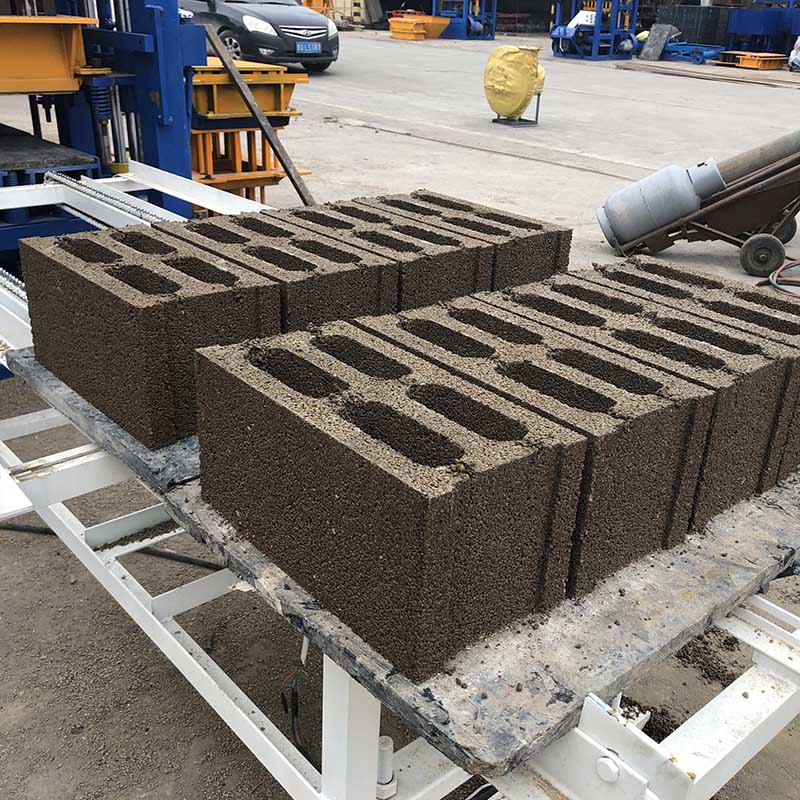
Image source:Aiweiblockmachine
Introduction
The history of block making in Africa is a testament to human ingenuity and adaptability. From ancient mud bricks to modern concrete blocks, the evolution of block making machines in Africa reflects not only technological advancements but also the changing needs of the continent’s burgeoning population. This article traces the fascinating journey of block making machines in Africa, from their humble beginnings to their pivotal role in the continent’s construction industry today.
1. Ancient Origins: Mud Bricks and Sun-Drying
The earliest blocks: Africa is home to some of the world’s oldest civilizations, and its early builders were quick to recognize the benefits of constructing with bricks. In regions like Egypt and Sudan, mud bricks were formed by hand and sun-dried, creating structures that have withstood the test of time.
Innovations in form: As populations grew, so did the need for more efficient brick production. Early inventors developed rudimentary molds and presses to shape bricks more consistently, marking the first steps towards mechanization.
2. Industrialization and Colonial Influence
The colonial legacy: The industrial revolution in Europe had a profound impact on brick making in Africa. Colonial powers introduced machine-made bricks to the continent, revolutionizing construction practices and sparking a shift away from traditional methods.
The birth of the brick machine: Early brick machines, often steam-powered, began to appear in Africa’s urban centers. These machines allowed for the mass production of bricks, enabling rapid urbanization and the construction of colonial infrastructure.
3. Post-Independence Innovations
Independence and industrialization: As African nations gained independence, there was a renewed focus on industrialization and self-sufficiency. This led to investments in local manufacturing, including brick machine production.
Local adaptation: African engineers and entrepreneurs started adapting imported brick machines to suit local conditions. Innovations included using local materials, like laterite soil, to create more cost-effective bricks.
4. The Rise of Interlocking Blocks
The problem of stability: In regions prone to earthquakes and instability, traditional bricks posed a danger. Interlocking blocks, which are held together without mortar, emerged as a safer alternative.
Innovations in design: Engineers in Africa developed innovative interlocking block designs and specialized machines to produce them. These blocks gained popularity for their strength, speed of construction, and reduced material waste.
5. Modern Block Making Machines in Africa
The era of automation: Today, Africa boasts a thriving block making machine industry. Modern machines are highly automated, producing a wide range of blocks efficiently. They use various raw materials, including concrete, cement, and fly ash, to meet the diverse construction needs of the continent.
Sustainability and eco-friendliness: In response to global environmental concerns, African manufacturers have integrated eco-friendly practices into block production. Some machines now use recycled materials or incorporate energy-efficient kiln technologies.
6. Case Studies: African Nations Embracing Block Making Machines
Kenya’s affordable housing initiative: Kenya’s government has embraced block making machines as part of its Affordable Housing Program, supporting local manufacturers and encouraging the use of machine-made bricks in housing projects.
Nigeria’s industrialization drive: Nigeria is investing in local brick machine manufacturing to meet the demands of its rapidly growing population and urbanization. Policies and incentives are supporting the sector’s growth.
South Africa’s sustainable construction: South Africa, known for its advanced construction industry, has adopted innovative block making machines that support sustainable building practices and reduce costs.
7. Challenges and Future Prospects
Access to technology: While urban centers benefit from modern block making machines, rural areas often lack access to this technology. Bridging this gap is a challenge that remains to be addressed.
Regulations and standards: Ensuring quality and safety in block production requires robust regulations and adherence to industry standards, which can vary across African nations.
Innovation and research: Continuous innovation is vital for the sector’s growth. Encouraging research and development in block making technologies is key to staying competitive in the global construction market.
Conclusion
The evolution of block making machines in Africa mirrors the continent’s journey towards modernization and self-reliance. From humble mud bricks to cutting-edge machines producing a wide array of blocks, African nations have embraced these technologies to meet the ever-growing demands of urbanization and construction. As Africa continues to evolve, the block making machine industry is set to play a pivotal role in shaping the continent’s built environment, contributing to sustainable development and economic growth.
